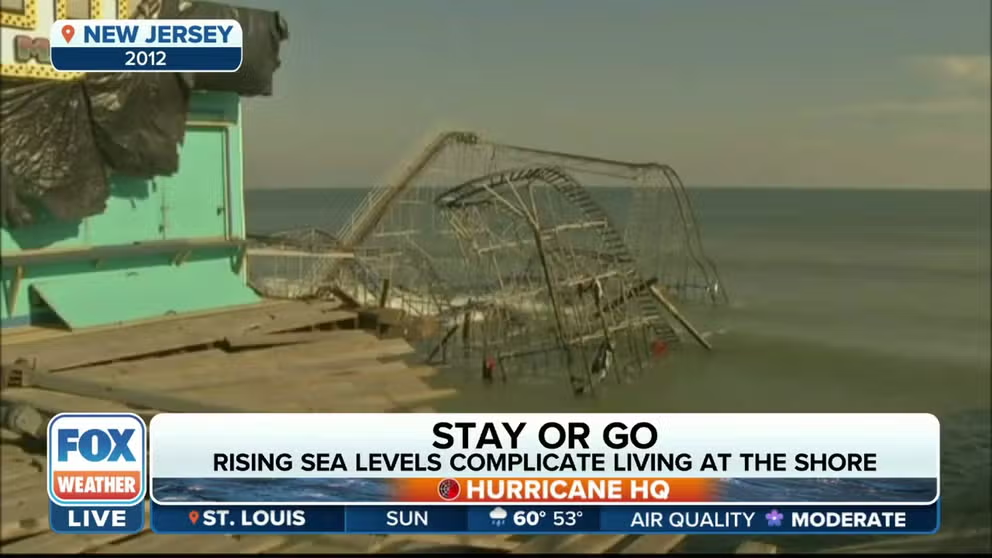Tough decision, rebuild or retreat: Superstorm Sandy survivor and sea-level expert made his
Research points to a 1.5-foot rise in sea level in the next 30 years for the Jersey Shore. On this 10-year anniversary of Superstorm Sandy, current and former residents wonder if they made the right choice.
Experts warn New Jersey should plan for 3-foot sea level rise by 2100
Rutgers University professor Kenneth Miller joined FOX Weather on Sunday morning to discuss challenges facing the New Jersey shoreline 10 years after Superstorm Sandy.
Stay or go, the tough choice homeowners make after devastating storms. FOX Weather asked the professor of the class Sea Change: The Rise and Fall of Sea Level and the Jersey Shore what he did.
Superstorm Sandy survivor, Kenneth Miller has a unique perspective on his own sea level rise research. The Distinguished Professor and Graduate Program Director at Rutgers University suffered tremendous damages at his New Jersey Shore home in Waretown on the Barnegat Bay after Sandy’s storm surge surpassed the 100-year flood mark by 19 inches.
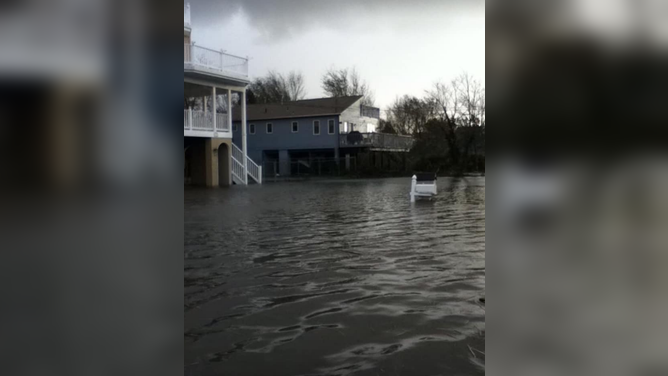
Kenneth Miller's flooded home in Waretown, New Jersey after Superstorm Sandy.
(Kenneth Miller / FOX Weather)
This was the fourth 100-year flood in the past 31 years that his home endured. And, he said sea levels will continue to rise due to climate change even as countries arrest rising levels of greenhouse gas emissions.
"Personally, we made a decision about five years ago to actually sell our house at the Jersey Shore," admitted Miller. "We weren't using it enough to justify it. And it is it's a tough proposition. You have to fight back. We constantly are fighting back."
One of his Waretown neighbors fought back. Ten years after Sandy they will finally be getting their certificate of occupancy, he said then added, they will likely flood again.
WHAT DOES THE TERM '100-YEAR FLOOD' ACTUALLY MEAN?
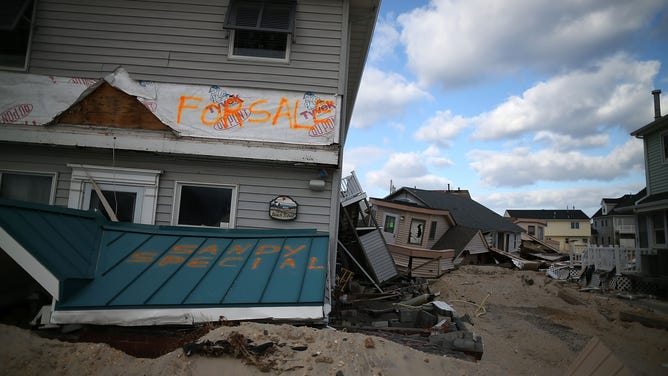
ORTLEY BEACH, NJ - Sandy damaged and destroyed homes in this Jersey Shore neighborhood.
(Mark Wilson / Getty Images)
More record flooding
"We project by the end of this century that we will have about three foot of rise," Miller told FOX Weather Sunday. For people who have mortgages, perhaps it's more realistic to look at something like by 2050, and we're predicting about a foot and a half of rise."
His research study suggests doubling to tripling of the rise last century. During the 20th century, water levels rose 1.5 feet for Atlantic City and a foot for the rest of the coast.
‘SUNNY DAY’ FLOODING HAS ALREADY DOUBLED FOR SOME COASTAL CITIES AND MORE IS ON THE WAY
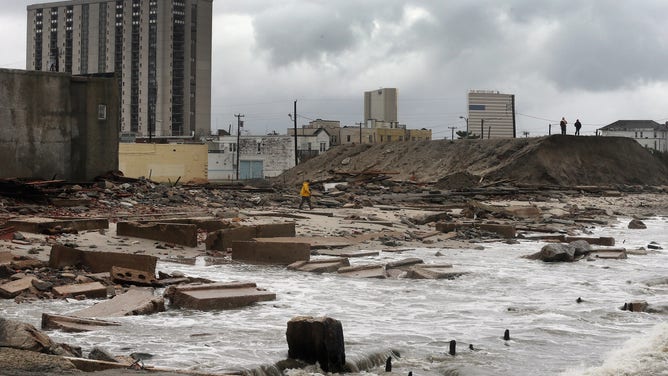
ATLANTIC CITY, NJ - Superstorm Sandy destroyed 2,000 feet of iconic Atlantic City boardwalk in front of this resort.
(Mario Tama / Getty Images)
"So it's not time to abandon the shore, but it is time to be aware that we are at greater risk to storm surges like Sandy because of sea level rise, both in the near term going in the next 10, 20 years and in the long term, certainly by the end of the century," said Miller.
Not everyone is building back better
"We built back from Sandy and in general we build back better. But there are areas we didn't build back better." There are areas we didn't build back smart," he added. "People need to be able to raise their houses, insure and make sure that towns are doing things like raising the roads."
Nourishing beaches, raising up homes and elevating roads are pricey improvements. Not every community wants to rebuild stronger and some instead retreat. The New Jersey Department of Environmental Protection started a buyout of homes in heavily impacted areas after Sandy, Rutgers Ecologist Brooke Maslo tasked with refurbishing explained to FOX Weather.
HOW TO WATCH FOX WEATHER ON TV
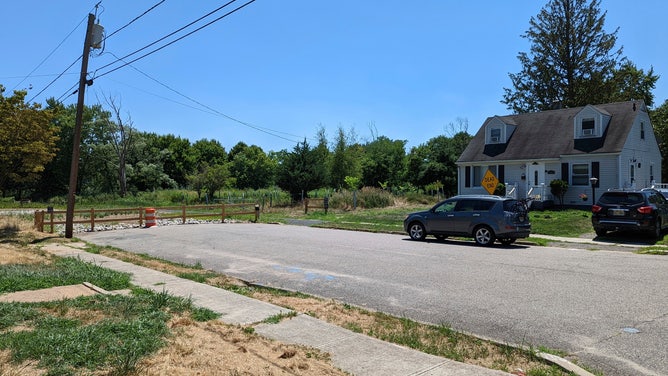
The road used to extend beyond this house until Superstorm Sandy. Hard hit neighbors took a government buyout and their homes were razed and turned into flood buffers.
(Gregory Bruno / FOX Weather)
"When you initiate these buyout initiatives, then you immediately increase resilience because you're moving people out of harm's way," said Maslow. "We're taking those buyout properties, and we're restoring ecological function to them."
The neighborhoods turned woodlands and wetlands shift from property to flood barrier. She said they capture flooding. But public policy experts claim that granting buyouts versus granting funds to rebuild stronger are not evenly distributed across all socio-economic levels.
"When assessing communities for mitigation, FEMA is using cost-benefit analysis (CBA) as a major criterion, which tends to concentrate buyouts in communities where there are lower-value properties," Rutgers Ph.D. candidate Laura Geronimo said in a Rutgers interview with Miller. "Meanwhile, CBA makes it more cost-effective to elevate higher value properties, concentrating elevations in wealthier communities."
HURRICANE IAN EXPOSES COMPLICATED PATH AHEAD FOR INSURANCE CLAIMS

FORTESCUE, NEW JERSEY - Ten years later, only the foundation survived on this New Jersey Beach. Sandy knocked homes off foundations.
(Michelle Gustafson for The Washington Post / Getty Images)
Miller agrees that rising sea levels will hit poorer communities harder and change the landscape of the coast. He refers to both the natural landscape and the population.
"The resources were not there (in working-class Waretown after Sandy), so many people couldn’t do anything, which was truly heartbreaking," Miller said. "And the people who reside on the barrier islands live on a threatened sand of time. The community can be maintained through intense beach replenishment or nourishment and by building sea walls. But by 2100, we will be looking at a fundamentally different New Jersey shoreline."
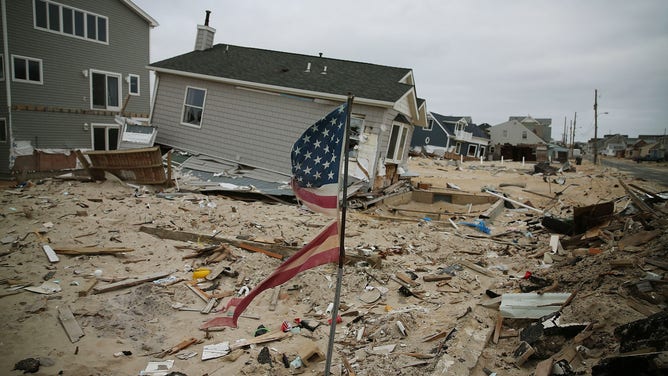
ORTLEY BEACH, NJ - Six months after Sandy ruined homes and debris still litter the Jersey Shore.
(Mark Wilson / Getty Images)
"That frequency of major flooding events is only going to increase," Miller said. "But certainly it's one of the more beautiful places to be. And if people want to be there, they just need to plan accordingly."
Communities in Southwest Florida currently face the same dilemma after Category 4 Hurricane Ian demolished homes with record storm surge and 150 mph winds. A research firm, CoreLogic estimates insured losses and damages to be about $47 billion.
